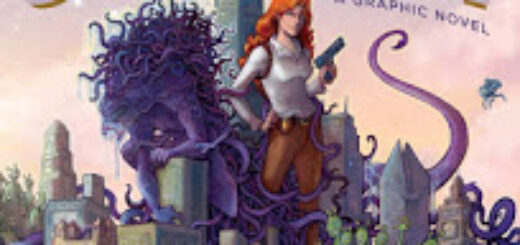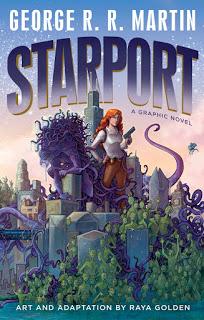His Dark Materials: The Complete Second Season Comes to Blu-ray/DVD June 29
 BURBANK, CA – Embark on an incredible adventure into a parallel world when Warner Bros. Home Entertainment releases His Dark Materials: The Complete Second Season, the critically-acclaimed original fantasy series from HBO, on Blu-rayTM and DVD June 29, 2021. Adapted from the second book of Philip Pullman’s epic trilogy, which has sold over 22 million copies worldwide, His Dark Materials: The Complete Second Season features all seven episodes from the exciting second season plus over an hour of special features including an all-new never-before-seen featurette. The release will be priced at $29.98 SRP ($39.99 in Canada) for the Blu-ray, which includes Digital Copy (US Only) and $24.98 SRP ($29.98 SRP in Canada) for the DVD. His Dark Materials: The Complete Second Seasonis also available to own on Digital via purchase from digital retailers.
BURBANK, CA – Embark on an incredible adventure into a parallel world when Warner Bros. Home Entertainment releases His Dark Materials: The Complete Second Season, the critically-acclaimed original fantasy series from HBO, on Blu-rayTM and DVD June 29, 2021. Adapted from the second book of Philip Pullman’s epic trilogy, which has sold over 22 million copies worldwide, His Dark Materials: The Complete Second Season features all seven episodes from the exciting second season plus over an hour of special features including an all-new never-before-seen featurette. The release will be priced at $29.98 SRP ($39.99 in Canada) for the Blu-ray, which includes Digital Copy (US Only) and $24.98 SRP ($29.98 SRP in Canada) for the DVD. His Dark Materials: The Complete Second Seasonis also available to own on Digital via purchase from digital retailers.
His Dark Materials follows young orphan Lyra (Dafne Keen) on a journey through a parallel world where a human’s soul exists outside one’s body – in the form of a talking animal called a daemon. Season two begins as Lyra, distraught over the death of her best friend, embarks upon a journey in a strange and mysterious abandoned city. There she meets Will (Amir Wilson), a boy from our world who is also running from a troubled past. Lyra and Will learn their destinies are tied to reuniting Will with his father but find their path is constantly thwarted as a war begins to brew around them. Meanwhile, Mrs. Coulter (Ruth Wilson) searches for Lyra, determined to bring her home by any means necessary.
Season two series regulars include stars Dafne Keen (Logan), Ruth Wilson (The Affair), Amir Wilson (The Secret Garden), Ariyon Bakare (Life), Andrew Scott (Sherlock, Fleabag), Will Keen (The Crown), Ruta Gedmintas (The Strain) and Lin-Manuel Miranda (Hamilton). Joining the cast this season are Terence Stamp (Superman), Jade Anouka (Cleaning Up) and Simone Kirby (Notes on Blindness).
His Dark Materials is produced by Bad Wolf in association with New Line Cinema for BBC One and HBO. Executive producing the series are Jane Tranter, Dan McCulloch, Joel Collins and Julie Gardner for Bad Wolf; Philip Pullman, Jack Thorne, Tom Hooper; Deborah Forte, Toby Emmerich and Carolyn Blackwood for New Line Cinema; and Ben Irving and Piers Wenger for the BBC.
7 ONE-HOUR EPISODES
- The City of Magpies
- The Cave
- Theft
- Tower of the Angels
- The Scholar
- Malice
- Æsahættr
BONUS FEATURES
- Noble Rogue: The Legend of Lee Scoresby (Exclusive to Blu-ray and DVD)
This documentary will explore the DNA of Lee Scoresby’s character (Lin-Manuel Miranda) and the aspects of the cowboy , outlaw or rogue, who through bravery, loyalty, and rebelliousness are willing to stick up for the underdog and fight for justice.
- Exploring His Dark Materials: Panserbjørne
- Exploring His Dark Materials: Daemons
- Exploring His Dark Materials:Portals & The Multiverse
- Exploring His Dark Materials: Witches
- His Dark Materials: Bringing Daemons and Bears to Life
- His Dark Materials: Exploring Cittàgazze
- His Dark Materials: Worlds Collide
- The Powerful Mrs. Coulter
- Lyra
- The Subtle Knife
DIGITAL
The second season of His Dark Materials is now available to own on Digital. Digital purchase allows consumers to instantly stream and download to watch anywhere and anytime on their favorite devices. Digital movies and TV shows are available from various digital retailers including Amazon Prime Video, AppleTV, Google Play, Vudu and others. A Digital Code is also included in the U.S. with the purchase of specially marked Blu-ray™ discs for redemption and cloud storage.
BASICS
Street Date: June 29, 2021
BD and DVD Presented in 16×9 widescreen format
Run Time: Approx. 420 minutes
Enhanced Content: Approx. 67 minutes
DVD
Price: $24.98 SRP ($29.98 in Canada)
2 DVD-9s
DVD Audio: English (5.1) DD
DVD Subtitles: English SDH, Latin Spanish
BLU-RAY
Price: $29.98 SRP ($39.99 in Canada)
2 BD-50s
BD Audio: English DTS 5.1, French
BD Subtitles: English SDH, French, Latin Spanish


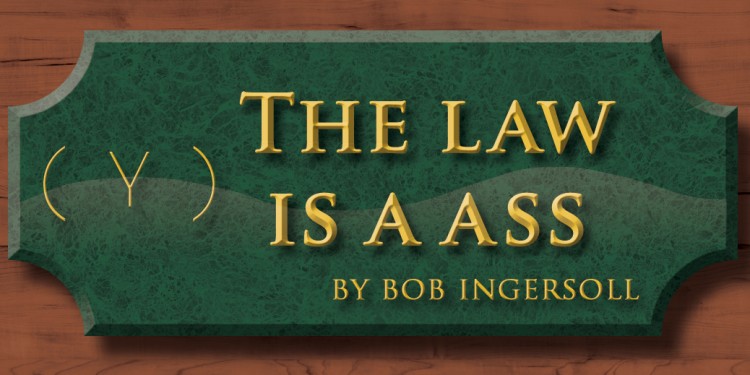
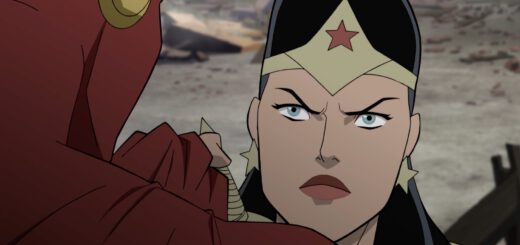
 Stana Katic returns to the DC Universe Movies as the voice of Wonder Woman in Justice Society: World War II – which is current available on streaming services.
Stana Katic returns to the DC Universe Movies as the voice of Wonder Woman in Justice Society: World War II – which is current available on streaming services.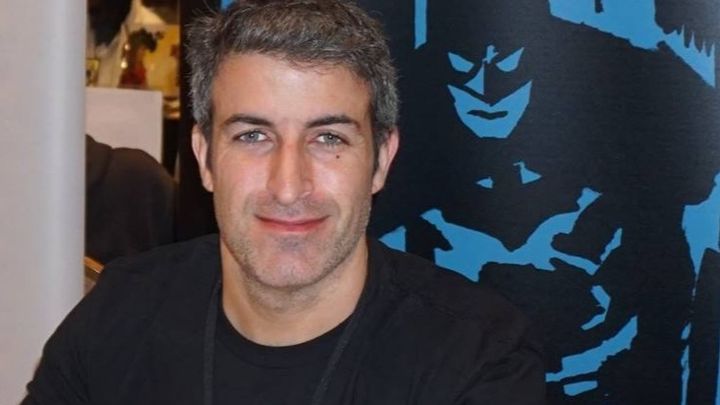
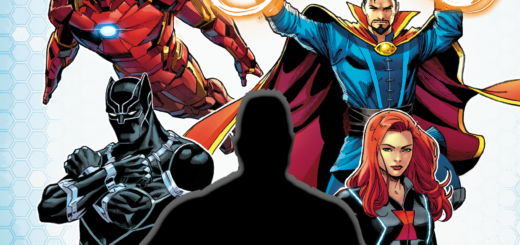
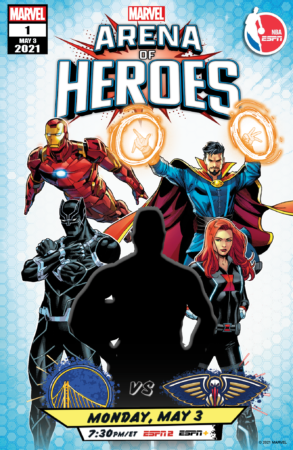 ESPN and Marvel announced
ESPN and Marvel announced ESPN commentators Ryan Ruocco and Richard Jefferson will provide commentary in a fully customized Marvel-themed studio at ESPN’s Bristol, Conn. campus. Additionally , the special presentation will include commentary and analysis from Marvel expert Angélique Roché.
ESPN commentators Ryan Ruocco and Richard Jefferson will provide commentary in a fully customized Marvel-themed studio at ESPN’s Bristol, Conn. campus. Additionally , the special presentation will include commentary and analysis from Marvel expert Angélique Roché.
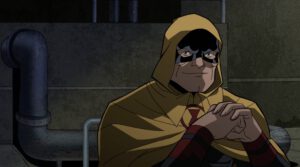 Matthew Mercer, who provides the voice of Hourman in the next entry in the DC Universe Movies canon, Justice Society: World War II. Also attached is an image of the character.
Matthew Mercer, who provides the voice of Hourman in the next entry in the DC Universe Movies canon, Justice Society: World War II. Also attached is an image of the character.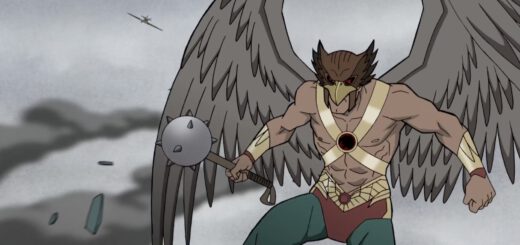
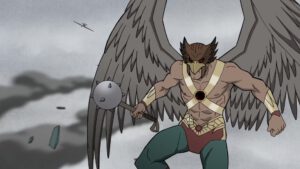 Omid Abtahi is currently commanding the fanboy scene with featured roles in The Mandalorian and American Gods, complementing his notable past roles in Argo, Better Call Saul, and Damien, as well as voice performances in the World of Warcraft and Call of Duty videogame franchises. Justice Society: World War II represents his DC Universe Movies debut.
Omid Abtahi is currently commanding the fanboy scene with featured roles in The Mandalorian and American Gods, complementing his notable past roles in Argo, Better Call Saul, and Damien, as well as voice performances in the World of Warcraft and Call of Duty videogame franchises. Justice Society: World War II represents his DC Universe Movies debut.








